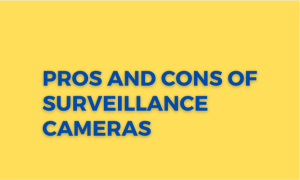Z-wave is one of the technologies of the IoT industry and is used as a standard for smart homes and smart businesses. It is used to control all your appliances both at home and in the office, starting a journey to a smart home network with a central controller known as the hub.
Z-wave uses radio frequencies to send out signals and communicate with other connected devices. The devices use the signal protocol to send and receive data via your network. If you left the Z-wave refrigerator open, a signal to your hub is sent and you get a notification alert via your phone.
Pros:
1. Compatible: It is compatible with other devices. All smart home devices will be able to connect with Z-wave and communicate with each other.
2. Wireless communication: Your appliances can communicate with each other as long as their within 50-100ft farther apart from each other. The devices can connect to the network without being within the router range.
3. Easy to set up: It is very easy to set up the wireless network by adding or removing devices without interfering with the router. Being able to easily add other devices into the Z-wave network helps build a home automation system. You don’t need technical know-how to set up the device.
4. Flexibility: Z-wave modern technology is flexible enough to accommodate some changes to thousands of products. The devices will be able to communicate and operate together.
5. Efficiency: The device has excellent performance and operates at 908.42 MHz; there is no interference with Wi-Fi or 2.4 GHz devices.
6. Suitability: Z-wave is suitable for small businesses or residential homes. It is great for being used within a single building.
The device can only hop four times thus, it can’t be used outdoors.
7. Secure: If security for all your smart home devices is your concern, then Z-wave is more reliable and easy to set up. It uses AES-128 encryption to provide a secure network to users
8. Interoperable: Z-wave allows users to mix and match devices together. This gives them total freedom to decide which devices to connect.
Users can uniquely tailor it based on their needs.
9. Range: Due to reduced interference, z-wave has an enhanced range optimized through the device leaping aspect of the tech.
10. High transmission speed: z-wave supports a transmission speed of 9.6 Kbps, 40 Kbps, and 100 Kbps data rates. This ensure devices are able to communicate with each other.
Cons:
1. Signal transmission: The devices connected to Z-wave should be within 300 sq. feet. If the size of your home is bigger than this, some devices will lose signal transmission information. Some of these devices will not be able to send or receive commands from the central controller, hub.
2. Expensive: Compared to other wireless devices z-wave is more expensive than the ZigBee.
3. Limited nodes: Z-wave restricts the number of devices or components connected to it to 232. Z-wave is limited to 4 hubs if more than 4 switches are used then the extra switched or nodes will lose signal.
4. Resource requirements: Z-wave is battery-intensive and consumes more power compared to other wireless technologies thus, you need to replace the battery more often. This makes the device to be bigger in size.
5. Network security: You need to have knowledge on how to maintain network security and prevent unauthorized access of the wires network. Z-wave uses radiofrequency transmission and hackers can tap into your network.
6. Topology structure: Z-wave supports only a tree topology structure.
7. Communication speed: It relies on a communication speed of up to 100 Kbps compared to the Zigbee standard.
8. Smart hub: You need to have a smart hub to control the network.
9. Network coverage: If you want to cover a wide area, you need to have more Z-wave devices to cover that large region.
10. Closed system: The protocol and software patches can only be done by Z-wave.



